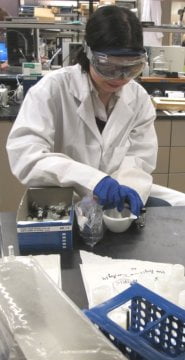IIT–Bombay team produces a wearable device that may help stroke survivors
A thin, light, wearable gesture-tracking device that behaves like a second skin and is able to precisely detect mechanical movements such as bending and stretching of the joints of the hand — fingers, knuckles and wrist — has been developed by researchers at the Indian Institute of Technology (IIT) Bombay.
The device can find applications in physiotherapeutic recuperation of stroke patients, personalised point-of-care health monitoring systems, and robotics.
Accurate measurement
While commercially available activity trackers can estimate parameters such as number of steps taken and calories burnt, this device can accurately measure the amount of motion taking place in all the three joints during any activity or gesturing, the researchers said.
The device is capable of instantaneously detecting movements and is quite sensitive — it can detect variations of about 2 mm during stretching and about 5 degrees during bending in all the three joints.
What makes the device particularly unique is its ability to track the amount of bending of individual joints and distinguish the differing extent of movement occurring simultaneously in all the three joints of the hand.
“The device can be directly put on skin, on gloves or any artificial surface like robots,” says Prof. Chandramouli Subramaniam from the Department of Chemistry at IIT–Bombay. The performance and sensitivity of the device is not compromised by humidity or temperature.
Across all joints
“Though we tested the device on the three joints of the hand, it can be used for tracking the movement of any joint in the body,” says Prof. Subramaniam.
The researchers used a polymeric film as a matrix in which carbon nanotubes are uniformly distributed. When the matrix is stretched or bent, the way the carbon nanotubes are connected changes. This produces a change in the electrical pathway across the device which is measured as change in resistance.
Unlike other devices which use metallic electrodes, the one developed by the IIT–Bombay team uses the same carbon nanotubes for electrodes. “Metal electrodes are more prone to failure and fatigue and are uncomfortable when used directly on skin. So we made the electrodes by coating a cotton thread with carbon nanotubes,” says Priya Rathi, the first author of the paper.
Studies will be carried out on healthy individuals and those with arthritis to understand the difference in movement of joints. Later, those with early-stage arthritis will be enrolled and a longer-duration study will be conducted, says Prof. Subramaniam.
The results of the research were published in the journal ACS Omega.
Source:-thehindu




















